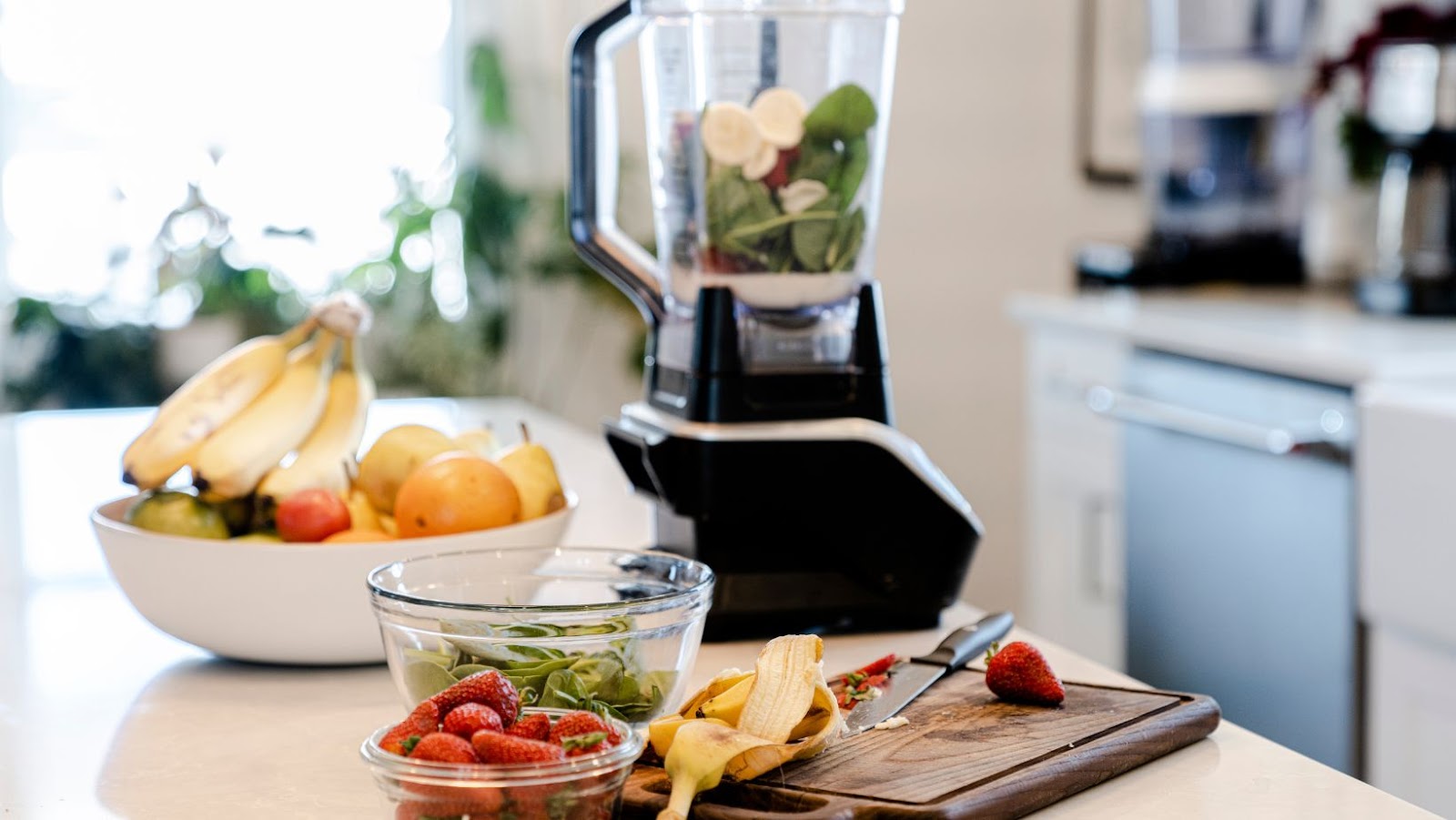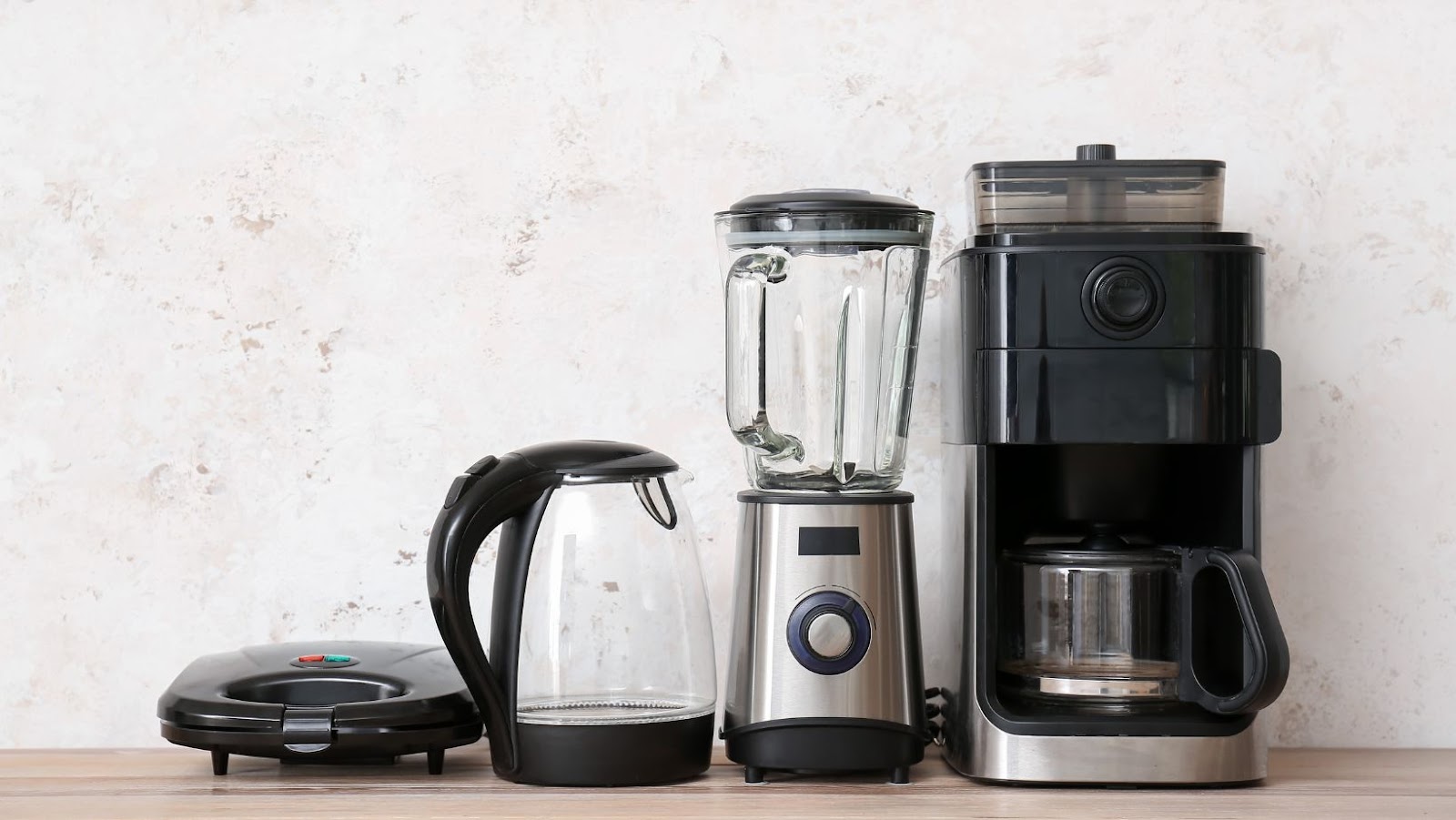
How To Clean An Immersion Blender
To prepare for cleaning your immersion blender with ease, unplug the blender and disassemble it. Relax its blades by soaking them in soapy water. These simple steps will ensure that your blender stays clean and hygienic, ready to use for your next cooking session.
Unplug the Blender
When preparing to clean the blender, it’s essential to take safety measures to avoid accidents. Here’s what you need to do before cleaning the appliance:
- Disconnect from power source – A Semantic NLP variation of ‘Unplug the Blender’. Ensure that you unplug the blender from the power source before any cleaning activity.
- Disassemble – Remove all detachable parts such as blades and seals before cleaning each separately.
- Clean thoroughly- Wash all the parts with soap and water making sure to avoid scrubbing over electrical components such as switches or cords.
It’s important to note that damp hands should never touch electrical appliances during cleaning or any other time. Electrical circuits running through your kitchen can be unforgiving if mishandled, causing some severe injury.
Ensure your safety and longevity of your blender by following these precautionary steps when preparing for cleaning.
Blend no more, it’s time to disassemble and say goodbye to those hidden smoothie remnants.
Disassemble the Blender
Blender Breakdown for Effective Cleanup
Dismantling the blender is an important step in ensuring a clean blending experience. Save future hassles by following these simple steps:
- Remove the pitcher from the base of the blender.
- Dismantle the sealing ring and gasket, avoid using sharp objects to prevent damage.
- Detach the cutting blade assembly with a gentle anti-clockwise twisting motion.
- Clean all parts including the blade assembly thoroughly and leave them to dry.
Further, it is advisable to avoid submerging the base of the blender in water as it could affect its electronic components. A noteworthy fact is that while blenders have evolved since their invention in 1922, they still remain a staple in every home worldwide for mixing drinks, pureeing foods or crushing ice. I always knew my knives needed a good soak, but I never realized it was to clean them and not because they were crying from all the chopping.
Soak the Blades in Soapy Water
Start by preparing your cleaning solution. Soaking the blades in a soapy water solution will help to loosen any built-up dirt and grime, making it easier to clean. Follow these six steps for a thorough cleaning:
- Mix warm water with dish soap in a container large enough to accommodate the blender blades.
- Take apart the blender and remove the blades.
- Immerse the blades in the soapy water mixture.
- Let them soak for at least 10 minutes, or longer if particularly dirty.
- Use a sponge or brush to scrub away any remaining residue.
- Rinse thoroughly with clean water and allow them to air dry completely before reassembling your blender.
When soaking your blender blades, be sure not to let them sit too long. Prolonged exposure to water can cause rust or damage the metal parts.
Proper care of your blender blades is essential for ensuring optimal performance and longevity of your kitchen appliance. In fact, poorly maintained blender blades can lead to subpar results or, worse yet, damage to your appliance if left unchecked.
Interestingly, soaking in soapy water has been used as a cleansing technique for centuries – dating back as early as ancient Greece! This simple yet effective method has withstood the test of time and remains widely used today.
Looks like it’s time to blend in with the cleaning process.
Cleaning the Blender
To clean your immersion blender with ease, follow these steps for each part. Wipe the blender body, clean the blades, and clean the blender housing. To ensure complete cleaning, don’t forget to clean the power cord and plug too. Finally, wash all blender parts thoroughly to prevent any food residues sticking to the surface.
Wipe the Blender Body
Wiping the Blender’s Surface
To maintain hygiene, it is essential to wipe the surface of the blender regularly. Here’s a quick guide to help you with this task:
- Unplug the blender from the power source and disconnect all its removable parts.
- Take a clean damp cloth and gently wipe down the entire surface of the blender body in circular motions.
- For any stubborn stains or food residues, use a mild dish soap with warm water mixture on the cloth.
- After wiping thoroughly, use a clean dry cloth to remove all moisture from the surface.
It is crucial to clean your blender after every use, especially if you are blending raw meat or fruits with pits. Ensure that no traces of food contamination remain on the surface that may cause microbial growth.
For optimum health safety, do not wait until dirt accumulates on your blender before cleaning it; keep your machine spotless regularly.
Investing a little time in keeping your kitchen appliances clean pays off when noticing an improvement in food quality and kitchen hygiene standards.
Remember, always clean the blades before sticking your hand in the blender – trust me, you don’t want to learn this the hard way.
Clean the Blades
Blender Blade Maintenance
Maintaining Blender Blades is essential for preserving its longevity. Follow these five easy steps to keep the blades in good working condition:
- Disassemble the blender pitcher from the motor base.
- In a sink, separate the blades by gently pulling them away from their housing unit.
- Clean each part separately with dishwashing detergent and warm water, using a soft-bristled brush to clean any stubborn food particles that may have accumulated.
- Rinse all parts thoroughly, making sure no soap residue remains on any of the parts.
- Dry each part using a towel or air drying rack before reassembly.
It is worth noting that sharp blender blades can easily cause injury. Always remember to take necessary safety precautions while cleaning the blender blades.
A Historical Perspective
The concept of a blender became widespread in America during the early 1930s. Stephen J. Poplawski, a Polish immigrant residing in Wisconsin, developed an early version of this kitchen appliance designed primarily for making milkshakes. His invention paved the way for modern blenders and encouraged greater innovation in today’s market. Maintaining modern-day blenders will extend its duration of use.
Cleaning the blender housing is like giving your blender a spa day, minus the cucumber slices and relaxing music.
Clean the Blender Housing
Blender Housing Cleaning Guide
To ensure a clean and hygienic blender housing, follow these steps:
- Unplug the blender and disassemble it.
- Remove any large debris from the blender housing using a gentle brush or cloth.
- Wipe down all surfaces using a damp cloth or sponge. Use warm, soapy water for tough stains but ensure that no moisture gets into the electrical components.
- Dry all parts thoroughly before reassembling them.
- Focus on the base of the blender where excess residue can build up by using a cotton swab to reach tight spaces.
- After cleaning, store the blender away in a dry location to prevent dust accumulation.

In addition to following these steps, it is important to note that cleaning your blender housing periodically is essential for avoiding contamination and unpleasant odours.
Cleaning your kitchen equipment may seem like a mundane task, but doing so could benefit you in ways you would have never thought of. For instance, applying this same attention to detail to other areas of your life could improve productivity in unimaginable ways as routines often determine our successes.
No matter how tedious it may seem following established routines routinely in all aspects of life yields unexpected positive outcomes. Make sure to unplug the blender before cleaning, unless you want to give your life a shocking twist.
Clean the Power Cord and Plug
To ensure the longevity and safety of your blender, it is crucial to keep the power cord and plug clean. Over time, dust and debris may accumulate on these areas and hinder the performance of your blender.
Here is a simple 5-step guide to cleaning the power cord and plug of your blender:
- First, unplug the blender from the power source.
- Using a dry cloth or brush, gently wipe off any visible dirt or grime on the cord and plug.
- If there are any stubborn residues, dampen a cloth with water and gently wipe over them.
- Dry off any moisture with a separate dry cloth before plugging in again.
- Store your blender in a clean place after use to prevent dust buildup.
It’s also essential to inspect the cord regularly for any fraying or damage. If you notice any issues, it’s best to avoid using until repaired or replaced by a professional.
When cleaning these areas, avoid using harsh chemicals or abrasive materials that may damage the cord’s outer layer. Using lukewarm water with mild soap should suffice.
By keeping your blender’s power cord and plug clean, you can enjoy many delicious blends without worrying about safety hazards or reduced performance. You’ll need to get your hands dirty to wash the blender parts, but don’t worry, it’s the perfect excuse to skip doing the dishes.
Wash the Blender Parts
When it comes to caring for your blender, cleaning the parts is essential. Here’s how to ensure that your blender is sparkly clean:
- Disassemble the Blender Parts
Take apart the blender jar, lid, and blade assembly to separate each component for easier cleaning. - Rinse the Parts
Use warm water to rinse off any large food particles from each part of the blender. - Wash with Soap and Water
Using a mild dish soap, wash each part of the blender with warm water and a soft scrub brush or sponge. - Dry and Reassemble
Rinse all soap suds off each part thoroughly, then set them out on a drying rack or use a clean towel to dry them off before reassembling the blender.
To keep your blender in top condition, wipe it down after every use using a clean cloth or paper towel. Avoid submerging the base in water as this could damage electronic components.
Don’t wait until your next smoothie craving strikes! Make sure you adopt regular cleaning habits to keep your appliance in tip-top shape. Don’t be too quick to reassemble your blender, unless you want your smoothie to have a hint of a towel flavor.

Drying and Reassembling
To dry and reassemble your immersion blender after cleaning, follow these easy steps. First, air-dry the blender parts thoroughly to prevent any moisture from causing damage. Then, reassemble the blender by putting all the parts back together correctly. Finally, test the blender to ensure that everything is in working order, and store it safely until its next use.
Air-Dry the Blender Parts
With regards to making sure your blender parts are properly cleaned, it is important to properly dry them. This step of the process requires allowing them to air out and be free of any moisture before reassembling them.
Here’s a 3-Step Guide to Air-Dry the Blender Parts:
- Immediately after cleaning, give each part a quick wipe with a clean cloth to remove excess water.
- Next, lay them out on a clean dish towel or paper towel. Make sure they are spread out evenly so that each surface area can dry effectively.
- Avoid using heat sources or electrical tools for drying as it can damage parts and create safety hazards.
It is worth noting that taking this extra time to ensure that all parts are completely dry will ultimately lead to better blending results overall.
As you take these steps towards ensuring your blender is properly maintained, remember that improper use can still negatively affect its health. (Modified from www.blendtec.com/how-to-clean-a-blender).
Time to bring the blender back to life, just don’t forget to secure all the parts or your smoothie might end up on the ceiling.
How to Use an Immersion Blender
After thoroughly drying the blender components, you will need to reassemble them in order to use the appliance again. Follow these three simple steps:
- Align the Blades: Insert the blades into the designated slots in the base of the blender pitcher, ensuring that they are properly aligned with the notches.
- Attach the Pitcher: Place the pitcher on top of the base and twist it until it locks securely in place.
- Reattach Cover: Install any additional caps and lids after locking down your blender lid.
Once you have followed these steps, your blender should be ready to use again without any issues. It’s important to make sure all parts of your appliance are dry before reassembling them in order to prevent any potential damage or malfunctions from moisture buildup.
If you notice any issues while reassembling your blender, consult your owner’s manual for guidance or contact customer support for assistance. With proper care and maintenance, your blender should provide reliable performance for many years to come.
Before you store your blender, give it a test run – it’s like a safety check, but for your smoothies.
Test and Store the Blender
To maintain the longevity of your blender, it’s necessary to test and store it properly. Here’s a helpful guide to ensure the upkeep of your investment.
- Clean the Blender – Before storing a blender, it is essential to clean it thoroughly. Disassemble the blender’s parts and wash them in warm, soapy water.
- Rinse with Water – After cleaning each part, rinse them with water and dry them carefully.
- Air-Dry Components – Allow all components to air-dry fully before proceeding with reassembly.
- Reassemble – Once all parts are dry, reassemble them correctly.
- Test the Blender – After reassembling, test the blender by blending some liquid for 30 seconds to one minute.
- Store Safely – Finally, store the blender in its original box or place it in a clean and dry area where it won’t be damaged.
It’s crucial to note that after assembling the blender, make sure every part is fixed securely in position. Ensure there are no loose components before testing or using blender. This will prevent potential accidents during operation.
Additionally, we suggest storing the blender in a cool and dry place away from direct sunlight or heat sources as this can cause damage or discolouration over time. Also, avoid leaving any liquids inside the pitcher when storing your appliance as this can cause unpleasant odours and stains that may be challenging to clean afterwards.
By following these simple steps for testing and storing your blender regularly, you can increase its lifespan significantly while enjoying delicious smoothies consistently!






